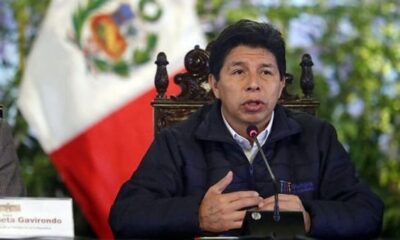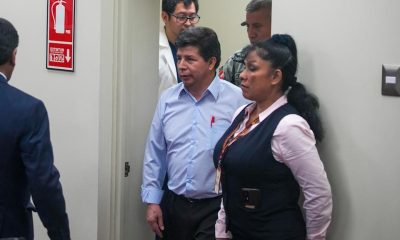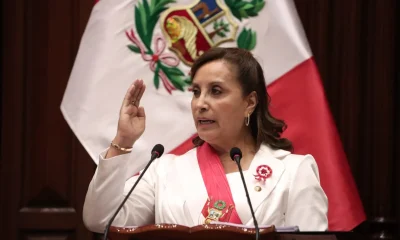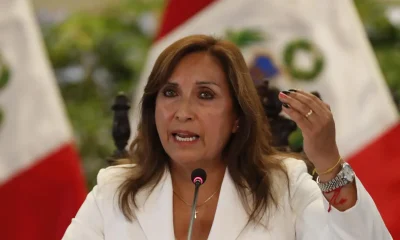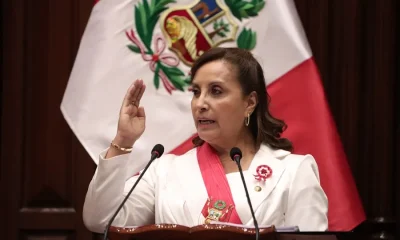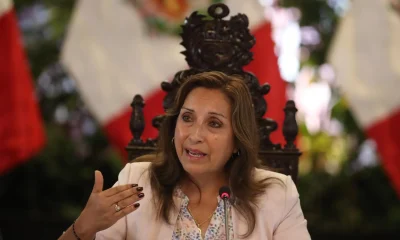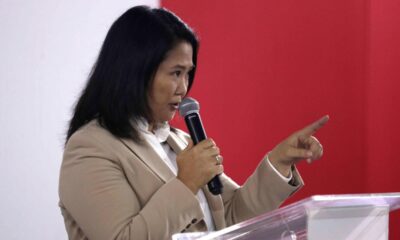International
The boarding school that fights for the future of seven indigenous peoples in the Amazon of Peru
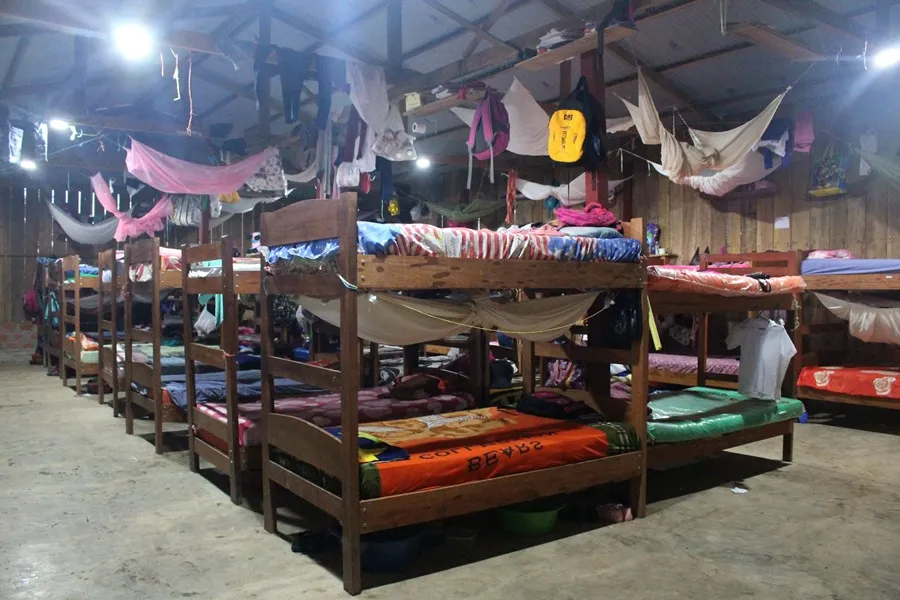
Shirts, pants and backpacks hang from wooden beams in a large room full of old bunk beds in which students from a particular educational center sleep in the heart of the Amazon of Peru. This residence and institute welcomes 248 adolescents of seven ethnic groups who seek to improve their future and, with it, that of their peoples.
The Yankuam Jintia high school (‘Luz en el camino’, in the indigenous language Achuar) is located in San Lorenzo, capital of the Datem del Marañón, and is an option for teenagers who do not have educational centers in their small indigenous communities.
It has teenagers from 12 to 18 years old of the shawi, condoshi, wampis, quechua, awajún, shapra and achuar ethnic groups, from 95 peoples, so the mixture of languages and cultures is breathed in the walls full of murals.
It houses realities of all kinds, from adolescents whose families have decided to give a better education for their children than their community can provide, to those who are orphans or have suffered abuse and did not have a safe home.
“We are always doing shifts so that they are not alone. We are always here with you at all times, they are small who come for the first year at 11 and 12 years old. They are very brave when leaving the family to come to study (…) They need the paternal warmth from us as mother and dad,” the director of the center, Sandra Elizabeth Flores, tells EFE.
He explains to EFE in the courtyard that this place was born as a male boarding school at the initiative of the missionaries of the Sacred Heart of Jesus, who saw 50 years ago the little access that young people in these areas had to education.
“It was seen that our young people didn’t adapt much. There was a little bit of discrimination, because they didn’t master Spanish. Then the students came sad,” says the director, adding that for this reason the boarding school also became an intercultural school that respected the various origins of adolescents.
She adds, proudly, that the center has also been open since 2016 for girls, who are now a little more than half of the total.
“We do a comprehensive job trying to ensure that the children are respected, that the original language is maintained and we are working with a culture of peace,” says Flores.
The residence has an area for girls and a boys’ area, with several rooms per age group, in which some students have their books, hygiene material and glossy shoes tidy, while others keep their muddy slippers next to their toothbrushes.
“The reality in this educational institution, on the one hand, is fun, we share cultures, beliefs, experiences with each other and we make the union as a family, but we lack some basic needs since the institution does not have enough resources,” Jean, a 15-year-old young wampi, representative of the students and whose native community is two days away from the institute, tells EFE.
In the wooden bunk beds, there are no mattresses for some, and there are no pillows or mosquito nets for everyone.
“Like all young people, we also need to have fun and we want tools like balls and poles to go to represent school when we play soccer and be presentable,” he says before adding that he wants to get a scholarship to study Law.
The director shares her frustration by agreeing that the center lacks resources of all kinds, but that every year teenagers who want to enter are left out.
For many, the objective is to get one of the scholarships granted by the Government to students of high performance and scarce economic resources to pursue a university career, so the routine of the institute is focused on studies, which occupy mornings and afternoons.
But Jean admits that there is no computer in the center, a need that has identified a project developed by Unicef and Adra at the Datem del Marañón, which seeks to protect children, adolescents and their access to health services.
“We have worked with them on the issue of communication, their skills and strategies so that they can be able to easily develop, lose their shyness in front of the public when they express themselves or when they want to talk,” says the project coordinator, Lady Mondragón.
They also promoted the creation of ‘spots’ with messages alluding to health care that they have elaborated in the dialects of their native peoples, something that is not usually common since they are usually disseminated in Spanish.
He adds that, through this initiative, they have known the importance of promoting health in their communities, where they will then share them, which also helps to give a voice to these adolescents who live in a rich interculturality.
A project that gives communities a future of a present and a future that emanates from their adolescents.
International
Police investigate deaths of Rob Reiner and wife as apparent homicide

The Los Angeles Police Department (LAPD) is investigating the deaths of Hollywood actor and filmmaker Rob Reinerand his wife as an “apparent homicide,” amid a wave of tributes to the director of classics such as When Harry Met Sally.
According to U.S. media reports on Sunday, Rob Reiner and Michele Singer Reiner were found dead at their Los Angeles mansion with what appeared to be stab wounds.
Several political figures shared messages of condolence following the reported deaths of the director of A Few Good Menand his wife.
While the LAPD did not officially confirm the identities of the victims, it stated that homicide detectives were dispatched to the Reiner residence.
“At this time, no additional details are available and the investigation into an apparent homicide is ongoing,” the Los Angeles Police Department said in a statement posted on social media.
LAPD Deputy Chief Alan Hamilton told reporters that no arrests have been made and that no individuals are currently being questioned as suspects.
“I’m not going to confirm whether anyone is being questioned at this moment or not. We are going to try to speak with as many family members as we can,” Hamilton said.
CNN reported that a family spokesperson confirmed the deaths of Reiner and his wife.
California Governor Gavin Newsom, former U.S. President Barack Obama, and former Vice President Kamala Harrisissued statements expressing their condolences.
International
U.S. and Mexico Reach Deal to Address Water Deficit Under 1944 Treaty

The United States and Mexico have reached an agreement to comply with current water obligations affecting U.S. farmers and ranchers and for Mexico to cover its water deficit to Texas under the 1944 Water Treaty, the U.S. Department of Agriculture said in a statement.
The department уточified that the agreement applies to both the current cycle and the water deficit from the previous cycle.
On Monday, U.S. President Donald Trump accused Mexico of failing to comply with the water-sharing treaty between the two countries, which requires the United States to deliver 1.85 billion cubic meters of water from the Colorado River, while Mexico must supply 432 million cubic meters from the Rio Grande.
Mexico is behind on its commitments. According to Washington, the country has accumulated a deficit of more than one billion cubic meters of water over the past five years.
“This violation is severely harming our beautiful crops and our livestock in Texas,” Trump wrote on Monday.
The Department of Agriculture said on Friday that Mexico had agreed to supply 250 million cubic meters of water starting next week and to work toward closing the shortfall.
Agriculture Secretary Brooke Rollins, quoted in the statement, said Mexico delivered more water in a single year than it had over the previous four years combined.
Trump has said that if Mexico continues to fall short of its obligations, the United States reserves the right to impose 5% tariffs on imported Mexican products.
Mexico’s Deputy Foreign Minister for North America, Roberto Velasco, said that a severe drought in 2022 and 2023prevented the country from meeting its commitments.
International
Several people shot in attack on Brown University campus

Several people were shot on Saturday in an attack on the campus of Brown University, in the northeastern United States, local police reported.
“Shelter in place and avoid the area until further notice,” the Providence Police Department urged in a post on X. Brown University is located in Providence, the capital of the state of Rhode Island.
U.S. President Donald Trump said on his social media platform Truth Social that he had been briefed on the situation and that the FBI was on the scene.
At 5:52 p.m. local time (11:52 p.m. GMT), Brown University said the situation was still “ongoing” and instructed students to remain sheltered until further notice.
After initially stating that the suspect had been taken into custody, Trump later posted a second message clarifying that local police had walked back that information. “The suspect has NOT been apprehended,” the U.S. president said.
-

 Central America5 days ago
Central America5 days agoHonduras election crisis deepens as CNE president denounces intimidation attempts
-

 Central America2 days ago
Central America2 days agoPanama seizes over three tons of drugs hidden in Caribbean port container
-

 International5 days ago
International5 days agoCuba battles out-of-control dengue and chikungunya epidemic as death toll rises to 44
-

 International5 days ago
International5 days agoColombia says it would not reject Maduro asylum request as regional tensions escalate
-

 International2 days ago
International2 days agoPolice investigate deaths of Rob Reiner and wife as apparent homicide
-

 International3 days ago
International3 days agoSeveral people shot in attack on Brown University campus
-

 Central America2 days ago
Central America2 days agoOAS urges swift recount in Honduras as election results remain uncertain
-

 International5 days ago
International5 days agoEcuador on track for record violence as homicides hit highest level in Latin America again
-
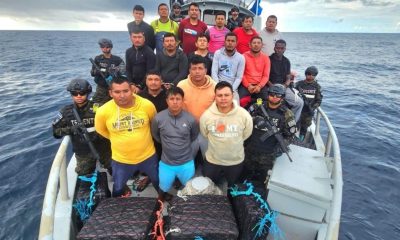
 Central America12 hours ago
Central America12 hours agoEl Salvador ranks among top countries in the Americas in fight against organized crime
-

 International3 days ago
International3 days agoU.S. and Mexico Reach Deal to Address Water Deficit Under 1944 Treaty
-
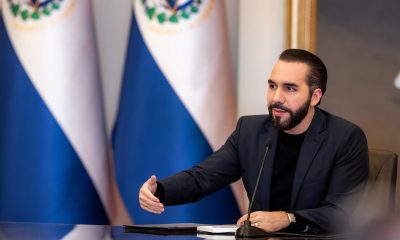
 Central America12 hours ago
Central America12 hours agoBukele says AI partnership with xAI will transform public education in El Salvador

























